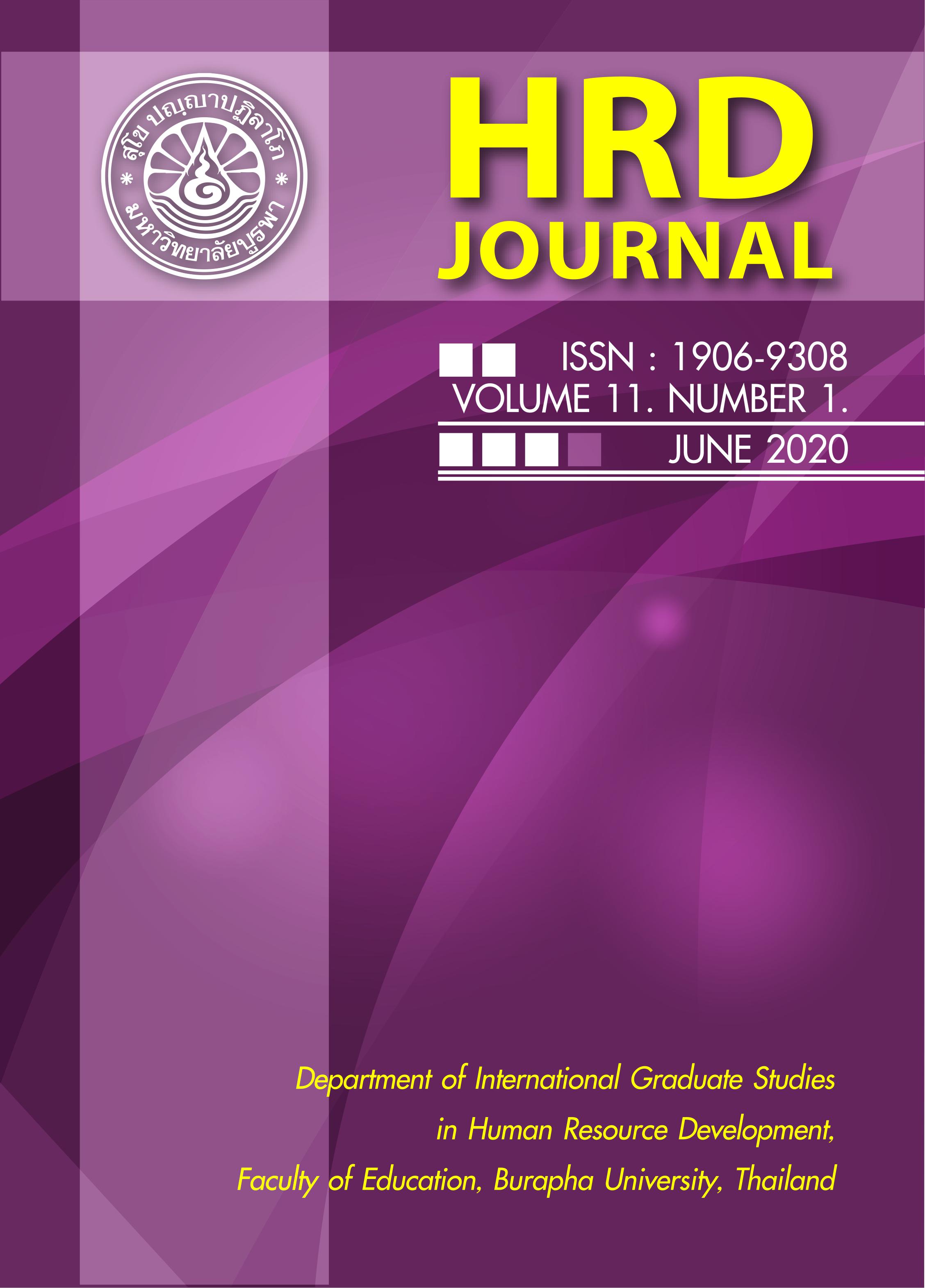Developing a Training Module to Improve Initial ELT Proficiency among Student-teachers in Multi-ethnic Community Schools
Keywords:
professional development, ADDIEM training process, initial ELT proficiencyAbstract
The purposes of the study were to investigate the current student-teachers’ professional development, to develop a training module to improve their ELT proficiencies and to determine its effectiveness. The mixed methods research of the convergent parallel design was applied by using the quantitative and qualitative research and data, such as questionnaires, pre-test and post-test, interviews, class observations, reflective notes, audio-visual materials, and training-related documents. In order to answer the research questions and keep a close consistence with the research design, the proposed ADDIEM Training Module was developed to run through the whole training process within six different phases which constituted of this complete training process. The training program was highly accepted by the effectiveness of great benefit and satisfactory from the current student-teachers’ feedbacks, and the specific improvements were discussed and the constructive recommendations were identified in the study.
References
Chen, H. T. (1990). Theory-driven evaluations. Newbury Park, CA: Sage.
Choi, S., & Rainey, H. G. (2010). Managing diversity in US federal agencies: Effects of diversity and diversity management on employee perceptions of organizational performance. Public Administration Review, 70(1), 109-121.
Collier, J., & Esteban, R. (2007). Corporate social responsibility and employee commitment. Business ethics: A European Review, 16(1), 19-33.
Dulebohn, J. H., & Martocchio, J. J. (1998). Employee perceptions of the fairness of work group incentive pay plans. Journal of Management, 24(4), 469-488.
Eckerson, W.W. (2009). Performance management strategies. Business Intelligence Journal, 14(1), 24-27.
Ferreira, A., & Otley, D. (2009). The design and use of performance measurement systems: An extended framework for analysis. Management Accounting Research, 20(4), 263-282.
Flynn, S. (2011). Can you directly motivate employees? Exploding the myth. Development and Learning in Organizations: An International Journal, 25(1), 11-15.
Fryer, K. J., Antony, J., & Douglas, A. (2007). Critical success factors of continuous improvement in the public sector: A literature review and some key findings. The TQM Magazine, 19(5), 497-517.
Gabris, G. T., & Ihrke, D. M. (2001). Does performance appraisal contribute to heightened levels of employee burnout? The results of one study. Public Personnel Management, 30(2), 157-172.
García-Valderrama, T., Mulero-Mendigorri, E., & Revuelta-Bordoy, D. (2009). Relating the perspectives of the balanced scorecard for R&D by means of DEA. European Journal of Operational Research, 196(3), 1177-1189.
Ittner, C. D., & Larcker, D. F. (1998). Are nonfinancial measures leading indicators of financial performance? An analysis of customer satisfaction. Journal of Accounting Research, 36, 1-35.
Jung, J.Y., & Wang, Y. J. (2006). Relationship between total quality management (TQM) and continuous improvement of international project management (CIIPM). Technovation, 26(5-6), 716-722.
Kaplan, R. S. (2009). Conceptual foundations of the balanced scorecard. In C. Chapman, A. Hopwood, & M. Shields (Eds.), Handbooks of management accounting research (Vol. 3, pp. 1253-1269). New York: Elsevier.
Kaplan, R. S., & Norton, D. P. (1996). The balanced scorecard: Translating strategy into action. Boston, MA: Harvard Business Press.
Kaplan, R. S., & Norton, D. P. (2007). Using the balanced scorecard as a strategic management system. Harvard business review, 85(7-8), 150-161.
Landy, F. J., Barnes, J. L., & Murphy, K. R. (1978). Correlates of perceived fairness and accuracy of performance evaluation. Journal of Applied Psychology, 63(6), 752-754.
Latham, G. P. (2007). Work motivation: History, theory, research and practice. Thousand Oaks, CA: Sage.
Marr, B. (2014). 25 need-to-know key performance indicators. Philadelphia, PA: FT Publishing.
Mate, A., Trujillo, J., & Mylopoulos, J. (2012).Conceptualizing and specifying key performance indicators in business strategy models. Retrieved from https://pdfs.semanticscholar.org/f954/914fd2af61f842e244067f7253fc48a65931.pdf
Mayer, R. C., & Davis, J. H. (1999). The effect of the performance appraisal system on trust for management: A field quasi-experiment. Journal of Applied Psychology, 84(1), 123-136.
Montgomery, C.A. (2011). Resource-based and evolutionary theories of the firm: Towards a synthesis. Norwell, MA: Kluwer.
Narcisse, S., & Harcourt, M. (2008). Employee fairness perceptions of performance appraisal: A Saint Lucian case study. The International Journal of Human Resource Management, 19(6), 1152-1169.
Newbert, S. L. (2007). Empirical research on the resource‐based view of the firm: an assessment and suggestions for future research. Strategic Management Journal, 28(2), 121-146.
Nørreklit, H., 2000. The balance on the balanced scorecard a critical analysis of some of its assumptions. Management Accounting Research, 11(1), pp.65-88.
Norton, D., & Kaplan, R. (1993). Putting the balanced scorecard to work. Harvard Business Review, 71(5), 134-140.
Parmenter, D. (2015). Key performance indicators: Developing, implementing and using winning KPIs. Hoboken, NJ: John Wiley and Sons.
Perlman, Y. (2013). Causal relationships in the balanced scorecard: A path analysis approach. Journal of Management and Strategy, 4(1), 70-79.
Schemmerhorn, J. R., Osborn, R. N., Uhl-Bien, M., & Hunt, J. G. (2011). Organizational behavior. Hoboken, NJ: John Wiley and Sons.
Sy, T., Tram, S., & O’Hara, L. A. (2006). Relation of employee and manager emotional intelligence to job satisfaction and performance. Journal of Vocational Behavior, 68(3), 461-473.
Wallace, J. C., Butts, M. M., Johnson, P. D., Stevens, F. G., & Smith, M. B. (2016). A multilevel model of employee innovation: Understanding the effects of regulatory focus, thriving, and employee involvement climate. Journal of Management, 42(4), 982-1004.
Zahoor, A., & Sahaf, M. A. (2018). Investigating causal linkages in the balanced scorecard: an Indian perspective. International Journal of Bank Marketing, 36(1), 184-207.
Downloads
Published
How to Cite
Issue
Section
License
Copyright@HRD Journal, Burapha University






